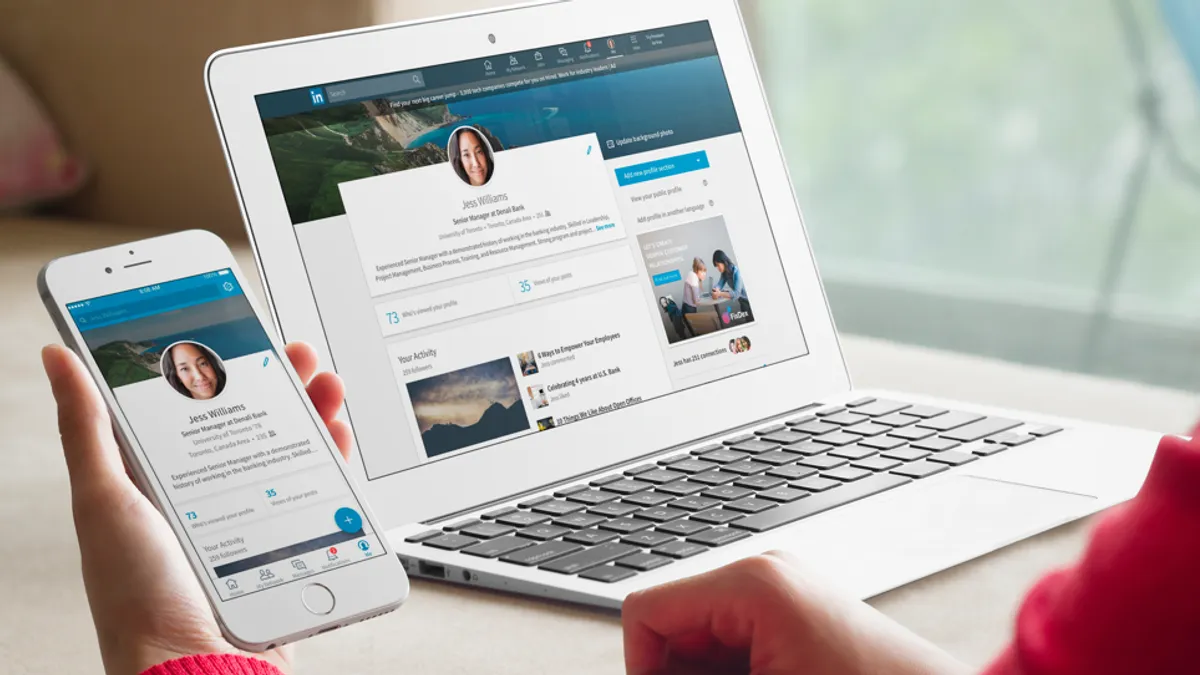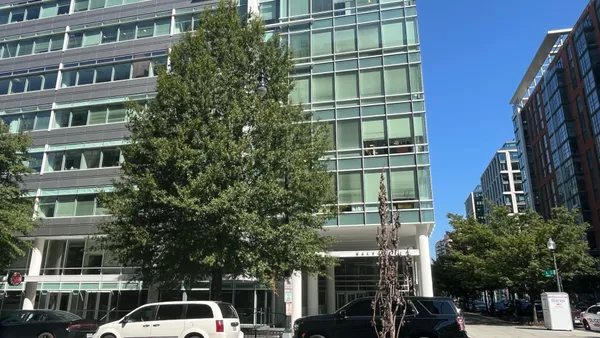Dive Brief:
- LinkedIn plans to rebuild its suite of talent tools offered through LinkedIn Recruiter, LinkedIn Jobs and Pipeline Builder and integrate them into one unified platform, the company announced today via blog post. The new intelligent hiring experience is slated to launch in summer 2019, LinkedIn said.
- New features informed by LinkedIn's user data and machine learning are a core part of the restructuring, LinkedIn said. A new "Recommended Candidates" tab will suggest candidates to recruiters based on their past searches; the tool will "keep getting smarter with every candidate you engage, or choose not to engage with," the company wrote in a press release. Other tools intended to save recruiters time include a new "bulk reject" messaging feature and a "slide-in profile" feature that will enable recruiters to view multiple candidate profiles at once and make notes to their colleagues. Collaborating with colleagues will also be possible through a shared InMail function, whereby recruiters will be able to show colleagues their communications with candidates and tag them with @mentions, the press release said.
- "I'm very excited for how it will change the workflow," John Jersin, VP of product for LinkedIn Talent Solutions and Careers, said in a webinar press briefing Monday. "There's simply more people on LinkedIn looking for jobs than there have been in the past," he said, noting that with these new tools, "it's more likely that recruiters on the other end will be getting [...] a significant increase in the number of quality candidates."
Dive Insight:
For many talent professionals, LinkedIn is the first stop for sourcing because it allows them to connect directly with talent and address them personally through messaging and InMail. LinkedIn reached 575 million members in 2018, but without a seamless user experience, recruiters aren't able to effectively mine that talent. Streamlining its search and improving its UI and design has been a long march for LinkedIn. But capitalizing on its breadth of user data has helped LinkedIn remain relevant to businesses seeking hiring trends and allowed the platform to expand its offerings in the e-learning space.
With its new hiring experience, LinkedIn is wielding its data in an attempt to make recruiters' jobs easier at a time when talent is hard to find. The pending new features speak to larger trends in recruiting, too, such as using AI to assess candidate potential and leaning on tech to assist in sourcing grunt work — ideally to free up recruiters to spend more time on cultivating personal relationships with promising prospects. LinkedIn's new collaborative tools might facilitate more collaborative hiring processes, helping recruiters encourage hiring managers to engage directly with potential candidates.
"Recruiting is an 'always on' function," Sarah Nahm, CEO of recruiting software company Lever, told HR Dive in a previous interview. "You never stop recruiting." With that in mind, talent professionals might want to think about how new workflows enabled by LinkedIn and other platforms can save them time and broaden the net they cast for potential hires.














